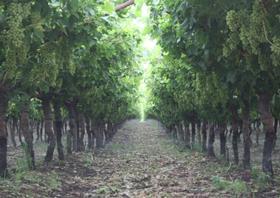
South Africa is looking back on a bumper year as far as the volume of table grapes shipped to the world’s markets is concerned.
It is not certain, however, whether this would also have satisfied the expectations of growers in terms of the returns they have received, particularly during the mid-season when prices in Europe dropped below the production cost level.
The South African Table Grape Industry (SATI) announced that the country shipped 54.66m cartons during the season, mainly through the port of Cape Town. The figure for total shipments out of South Africa may well be higher, as cross border exports in Southern Africa are normally not recorded by the Perishable Products Export Control Board (PPECB) and these shipments do not, in most cases, undergo quality inspections.
Growers in the Hex River Valley, who suffered from hail damage, probably experienced the worst of the market with tough conditions recorded for most of February. However, growers who still had the older late seeded varieties, Barlinka and Dauphine, reported a strong market.
All told, this may well have been the biggest export crop in the history of South African table grape exports, which started way back in 1893, although SATI's figures only date back to 1997 when the South African industry was deregulated. Post-deregulation, table grape exports have mushroomed, but became stagnant during the middle years of the past decade. During this period the fall-out of low prices and fragmented marketing forced consolidation, with a large number of smaller growers exiting the industry.
Leading growers say that South Africa may be entering a new era of growth as new and better varieties come into harvest. According to figures released by SATI, the total crop approved for export increased by 10 per cent compared with last year’s 49.45m cartons. However, while almost all the cartons inspected were exported this year, only around 44m passed through the country's ports last year. Getting accurate and updated export figures was a problem in 2011, hence the focus on approved export volumes.
By variety, very significant this year was the increase in red seedless, from 10.9m cartons last season to 13.54m cartons in 2012. Black seedless increased by nearly 40 per cent to 4.4m cartons, while white seedless, at 18.9m cartons, was 16 per cent more than last year and more or less on par with the 2009-2010 campaign.
Northern Europe received 55 per cent of the crop this year, the UK 21 per cent, the Far East 13 per cent, the Middle East 6 per cent and other smaller markets combined about 5 per cent.



